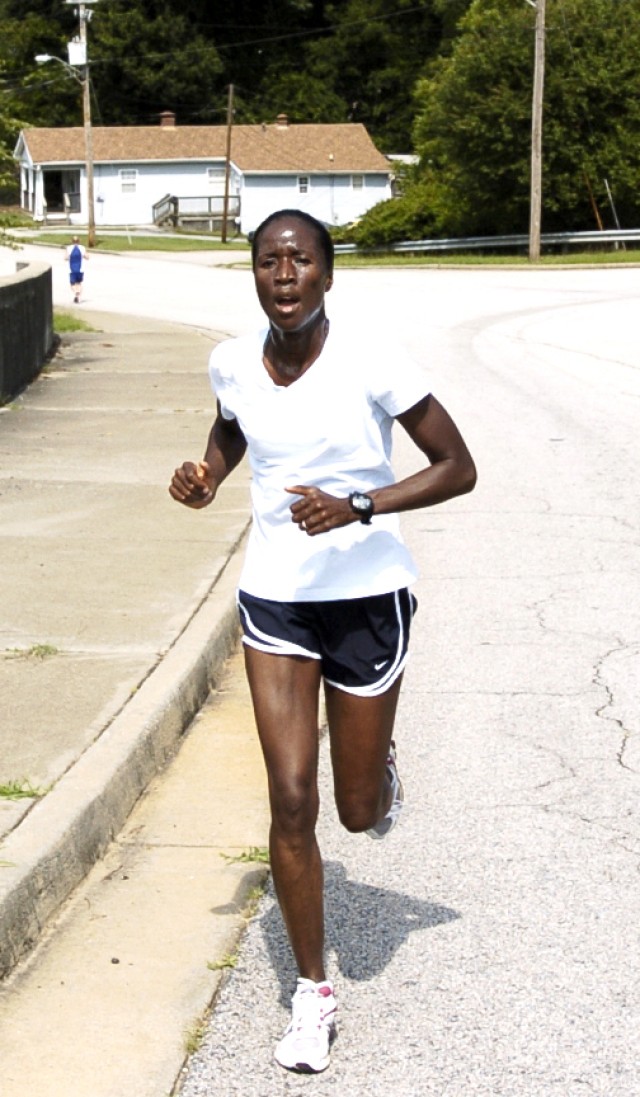The 26 runners representing U.S. Army Central and Fort McPherson in the 25th Annual Army 10-Miler are doing all they can to make sure they stand on the winner's podium Oct. 4.
For nearly the past six months, the team members have been training hard to reach their goal of winning their respective divisions, said team coach Robert Dalton, senior intelligence analyst, USARCENT.
The 26 members will be competing as four different squads: the U.S. Army Forces Command Fighting Ladies, Active Duty Masters Women Division; the Fort McPherson Master Elites, Active Duty Masters Men Division; the Third Army Road Racers, All Comers Division; and the Third Army Road Runners, Active Duty Mixed Division.
"At least two of the teams have a good shot (of winning)," said Dalton (Third Army Road Racers), adding that comparing past winning and current team times have allowed the squads to see which unit has the best chance.
The team's training aims to make each runner a strong link in the team. Their 27-week training schedule, which began April 1, is broken into four phases. Each phase - a 10-week building phase, an eight-week strengthening phase, a six-week sharpening phase, and a two-week tapering phase - is designed to build different skill sets and tie them together.
"It's improved my running endurance," said Capt. Pamela Wright, mobility officer, G4, USARCENT. Wright, (Third Army Road Runners), said she has been training with the team for the past four months.
Training consists of team workouts every Tuesday and Thursday. On Tuesdays, the team performs speed work on the track at Tri-Cities High School. On Thursdays, they perform hill workouts on the Harold Sheets overpass in East Point.
"The workouts are fairly structured," Dalton said, adding the workouts stem from original training plans created by retired Lt. Col. Sue Bozgoz, who formed the USARCENT Army 10-Miler team in 1996.
In order to mitigate the challenges from deployments, exercises, training and duties, team members receive weekly tips and pointers from Dalton and are encouraged to work out individually.
Stationed on Fort Gillem, Third Army Road Runners team member Capt. Nikki Blyston, planner, G4, First Army, said it is tough to attend the training on Fort McPherson and is often forced to train individually. Still, she said she tries to work out with the team whenever possible, because it provides additional motivation to workout.
"It's all about team camaraderie and being part of a team," Wright said.
Over the weeks, teammates have turned into friends, Dalton said. This friendship and esprit de corps, has pushed the team closed to their goals.
"I want to finish strong, contribute to the team and not hold them back," said Blyston, who will be participating in her first 10-Miler in D.C., but has experience running the race in Iraq. "I want to contribute in a positive way."
The success of the training to date is evident in the differences some runners have seen in their times between the time trials in March and the actual race, Dalton said.
"I ran it in 68 minutes in 2007, 64 minutes in 2008, and am hoping for 60 minutes and change this one," said Lt. Col. Kyle Koltoff, air and missile defense chief, USARCENT. "It's great to have the team to motivate each other."
Dalton said it isn't too late to begin training for next year's team, which will hold trials in March.
"You have to work up to it, build a base," Dalton said. "Start with long slow runs to build endurance and stamina. Increase the frequency, distance, duration and intensity as well."
Next year's team may be the last due to the 2005 base realignment and closure act being executed in 2011, Dalton said.
"This race has been around a quarter of a century. It has history to it," Dalton said. "There's a lot of camaraderie at event like the 10-Miler. It's a social thing."
"Team camaraderie, being part of the team, (and) seeing all my fellow servicemembers. There's a sense of excitement running the 10-Miler," Wright said. "Most serviemembers who are able to, would like to do it."




Social Sharing